A spring daytrip along the western Ligurian coast and meeting an EVO oil guru.
When I discovered the medieval beauty of Noli, blooming uplands up the sea and met a modern-day hermit living among centenarian olive trees.
Every now and then, we all need a little escape — even if just for a day. A few weeks ago, my husband and I decided to take a day off, just the two of us. No kids, no tight schedules, just a quiet weekday to enjoy the beauty of spring and a short, spontaneous getaway. We didn’t go far — just a one-day trip along the western Ligurian coast and into its quiet inland valleys. But what we found was a treasure: ancient towns, blooming countryside, honest food, and a truly unforgettable olive oil experience.
Noli, the Medieval Seaside Town
Our journey began early in the morning in Noli, a small medieval town nestled between Savona and Imperia.
This stretch of Liguria is famous for its towering cliffs and narrow valleys, and it’s thanks to a sheltered cove that Noli was able to grow and flourish. In the Middle Ages, Noli became one of the most important fishing and trading centers along the Ligurian coast.
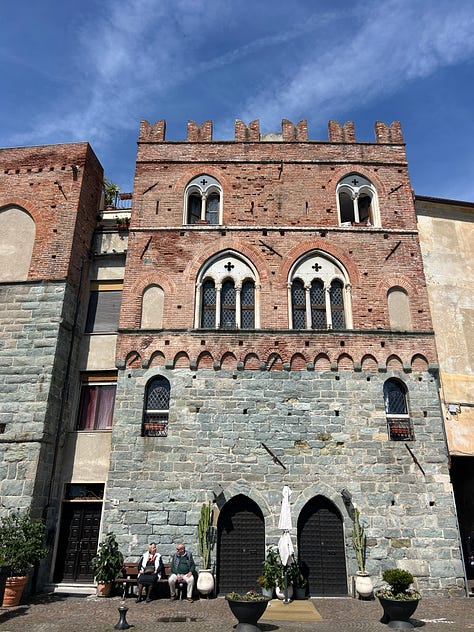
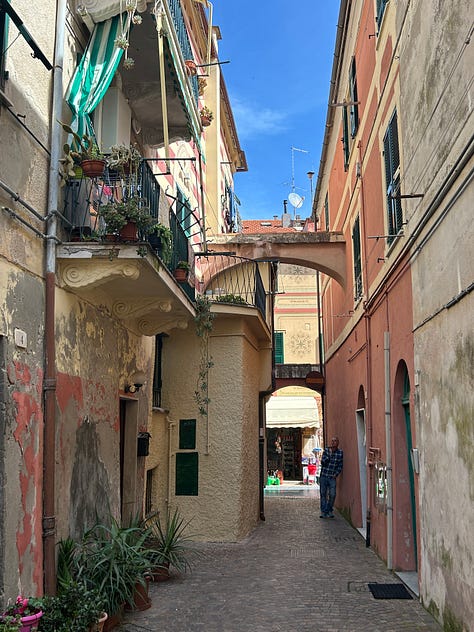
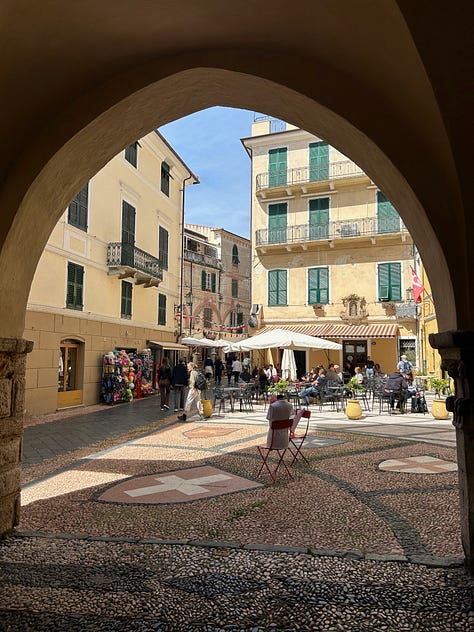
The town is still enclosed within its ancient walls, with a main gate facing north and a few small openings leading directly to the sea. Many of the houses were originally built as fortified towers, with thick stone walls designed to withstand attacks. Some still proudly display their crenellated tops. Wandering through the narrow alleys of Noli feels like stepping back in time: the lanes are tight, often connected by low stone arches, and many buildings still retain their original brickwork.
The village opens up here and there onto small piazzas, each one charming in its own way. The most remarkable is the town square, where a beautiful old loggia with arched colonnades stands, its floor paved with smooth, ancient sea stones.
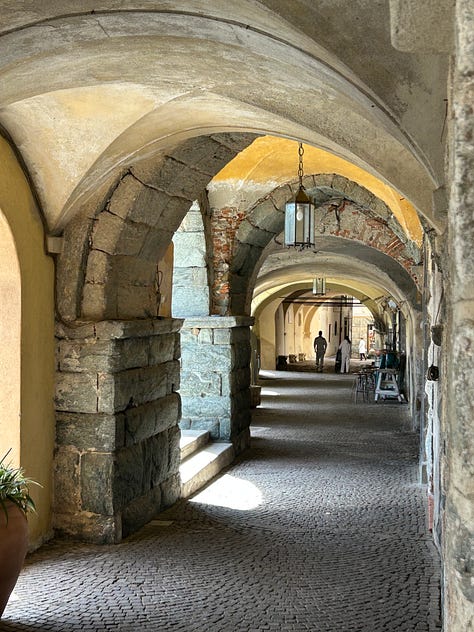
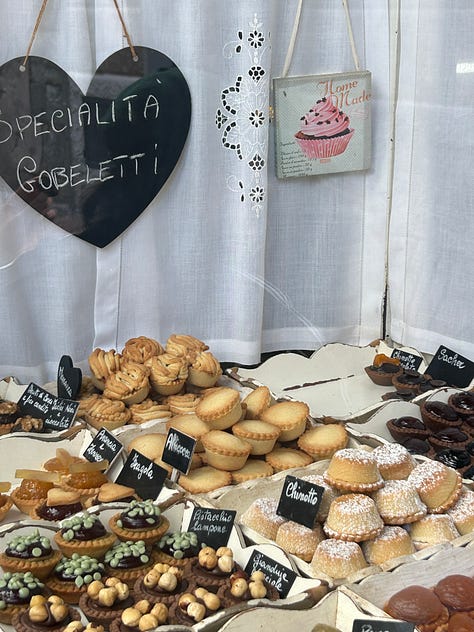
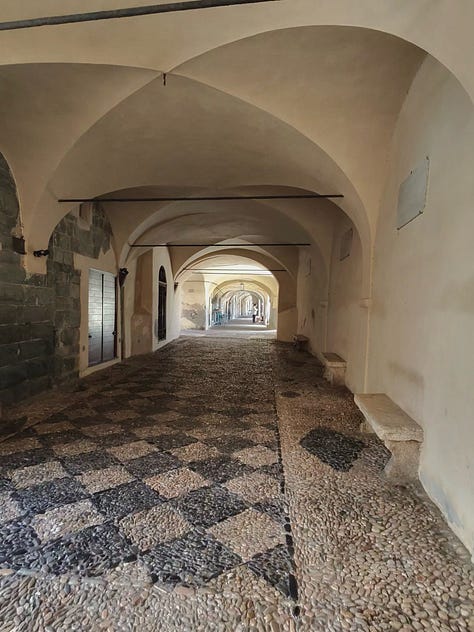
Hidden behind thick walls, secret gardens release the intoxicating scents of lemons, orange blossoms and aromatic herbs, which mingle with the salty breeze that funnels through the alleys from the sea.
Noli’s beach is wide and white, making the sea shimmer in brilliant shades of turquoise. It's no wonder that Noli has long been a beloved summer destination, especially for families from Piedmont and Lombardy who come to spend their holidays by the sea.
Scattered along the beach and the promenade, you’ll still find traditional wooden fishing boats, known as gozzi, resting on the sand. This authentic maritime soul is very much alive in Noli.
The fishing tradition in Noli is a shining example of how age-old local practices can align with environmental care. This commitment has led to the creation of the Slow Food Presidium for the Artisanal Fishing of the Gulf of Noli, which supports traditional, low-impact fishing methods passed down through generations.
Fishermen here use ancient techniques like the sciabica — a shore-drawn net operated entirely by hand — which allows for selective catches and avoids the use of motorized boats, preserving marine biodiversity and respecting seasonal rhythms. Among the local species once fished is the cicciarello, a tiny anchovy-like fish, typically served fried or marinated. Although European regulations have recently limited its capture, the fishing community of Noli continues to be recognized for its sustainable and respectful approach to the sea.
If you're visiting, don’t miss the fishermen’s market along the seafront promenade, open every morning from 9 to 11 AM. It’s the perfect place to buy fresh local fish directly from the source — and to experience a living piece of Liguria’s maritime heritage.
Before leaving Noli, don’t miss its sweet specialty: gobeletti, small pastries shaped like little muffins and filled with bitter chinotto marmalade. Chinotto is a local citrus fruit, originally from the Finale Ligure area — bitter, fragrant, and somewhere between a mandarin and a grapefruit. It’s an acquired taste, but one that lingers beautifully. You can read more on my blog post about chinotto.
The Blooming Uplands Behind the Sea
Just a few hundred meters inland from Noli’s coast — though it feels worlds away — lies a surprising landscape. Behind the town rises a gentle plateau, about 300 meters above sea level (called Le Maine) a wide and open space quite unlike the steep hillsides and dramatic cliffs that usually define Liguria’s coastline.
Here, a winding country road leads up from the sea, its soft curves tracing a path through vineyards, flowering gardens, olive groves, and bright orange orchards. The landscape is lush and generous, a far cry from the rugged, terraced hillsides that usually characterize the region. Scattered across the plateau are small, pale pink houses with a simple cubic shape — very different from the tall fishermen’s homes of the coast.
This hidden corner of Liguria is also a well-loved destination for cyclists, especially mountain bikers, who enjoy its gentle trails and breathtaking views. Along the road, welcoming trattorias invite visitors to stop and rest. These are rustic country inns, where the cuisine is simple, authentic, and tied deeply to the land.
We chose to have lunch at Trattoria il Gambero Verde, a charming trattoria set inside an ancient, deconsecrated stone church. Surrounded by vineyards, we dined under a leafy pergola, where the soft spring sunlight filtered through the vines. Our meal was pure, Ligurian simplicity at its best: homemade ravioli filled with wild herbs, dressed with a delicate meat sauce known locally as tocco — a traditional white sauce, without tomatoes. We enjoyed it with a glass of the house wine and a crisp salad. A light, wholesome lunch that tasted of spring, of the earth, and of home.
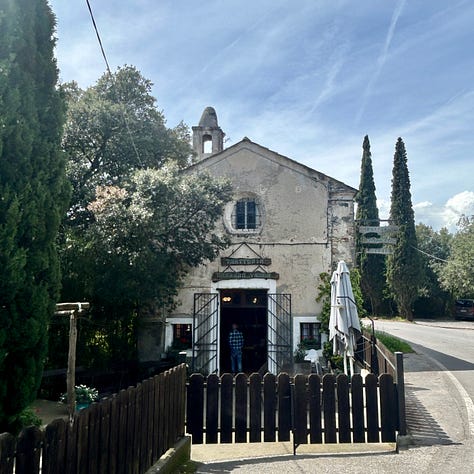
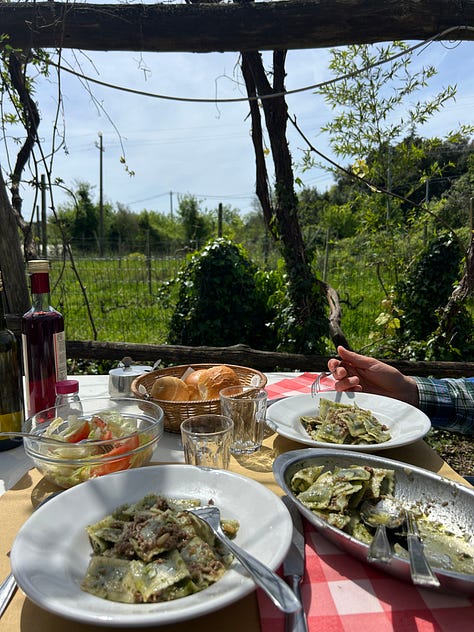
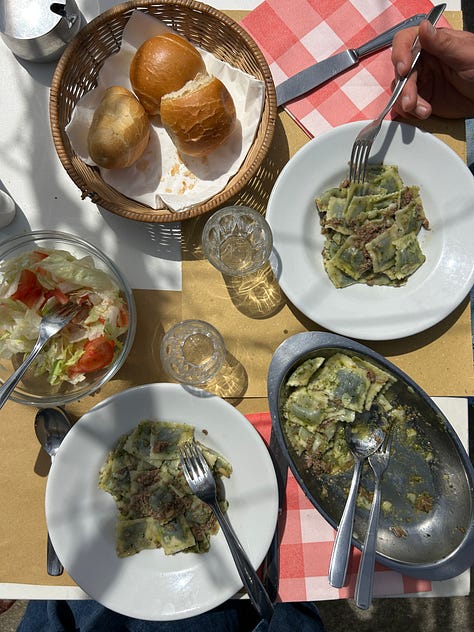
Meeting a heroic (modern day hermit) olive oil maker
Our day continued to unfold like the crescendo of a beautiful opera, growing richer and more unforgettable with each moment. The final chapter of our excursion was perhaps the most extraordinary: a meeting with olive oil producer Domenico Ruffino.
Finding Domenico Ruffino was no easy task. He has no website, no social media presence (a real off-the-map soul). I managed to track him down thanks to a technical listing on a government page dedicated to Ligurian olive oil producers. At first glance online, Domenico might seem like just another small farmer. But he is anything but ordinary. He is, in fact, a truly remarkable figure, considered one of the finest olive growers in the world, and a pioneer of heroic olive cultivation at an international level (he was awarded as the best heroic olive oil producer in the world by the Lodo Guide in 2023).
For over forty years, Domenico has tended a centuries-old olive grove perched high above the sea, just behind Varigotti. There’s no road leading to his land — to reach it, you must walk, hiking through ancient terraces of olive trees that plunge dramatically toward the turquoise water below.
Reaching Domenico felt like making a pilgrimage to visit a modern-day hermit — a man who has chosen to live quietly and passionately among his ancient olive trees, far from noise, comfort, and the digital world.
The trees Domenico cares for were planted nearly 900 years ago, in 1125, by Benedictine monks who crossed from the island of Lérins (off the coast of Provence) to establish olive groves along the Ligurian coast. Today, his olive trees stand as living witnesses to almost a millennium of history.
Unlike most Ligurian producers, who grow the well-known Taggiasca olive, Domenico has devoted himself to this ancient and nearly forgotten variety called Colombaia. This olive, with its naturally bitter and spicy character and its low oil yield, was once widely rejected — even by the monks who originally planted it, who later replaced many trees with the milder Taggiasca (but in the inland of Varigotti, too difficult to cultivate).
Yet Domenico, with stubborn courage and vision, chose to keep the Colombaia trees alive. And time has proven him right: today, the Colombaia is recognized for its extraordinary nutritional qualities, being exceptionally rich in polyphenols — those compounds that give olive oil its bitterness, spiciness, and powerful health benefits.
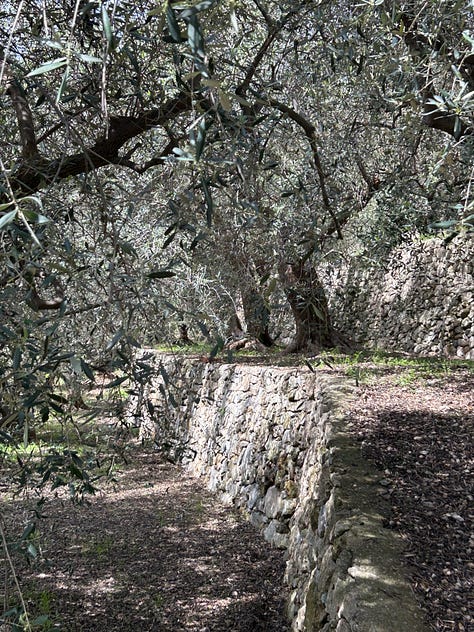
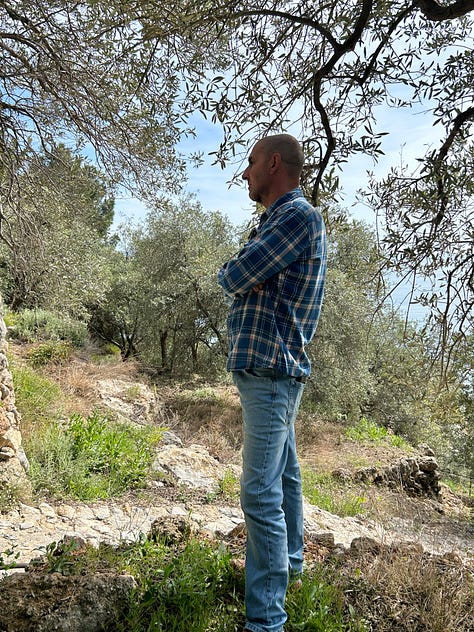
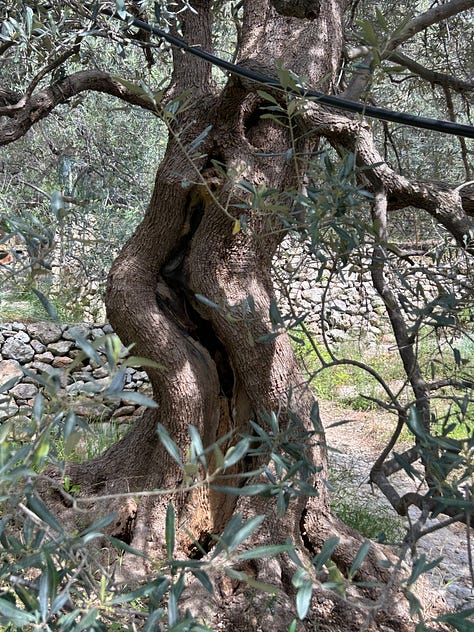
His farming practices are entirely ecological: the trees are irrigated minimally, fertilized naturally, and the olives are pressed within thirty minutes of harvest. To achieve this, Domenico built a cutting-edge, underground oil mill powered by solar energy, carved into the hillside itself. His mill allows him to produce both traditional olive oil and a rare, "denocciolato" (pitted) oil, which preserves even more of the olive’s beneficial compounds.
Meeting Domenico was particularly moving for me — not only because of his story, but also because I’ve just completed my training as an olive oil sommelier. I’m still fresh from my studies, full of questions, curiosity and awe. Domenico forthermore is a humble, straightforward man, completely at home among his ancient trees, speaking about his work with a passion and technical mastery that can only come from a lifetime of devotion.
We were fortunate enough to taste his oils — both the traditional and the "denocciolato" — and I can say they were among the most extraordinary oils I have ever experienced. The "denocciolato" in particular offered an aromatic complexity that was simply stunning, with vibrant floral and citrus notes unlike anything I had encountered before (a technical note: Removing the pits helps lower the presence of peroxides, which are natural oxidizing agents found in the pit itself, and this in turn helps retain more polyphenols — the powerful compounds that give extra virgin olive oil its aroma, intensity, and healthful properties)
If you’re wondering how to get your hands on a bottle of Domenico’s olive oil, I’m afraid I have some bad news: you can’t. This year’s production is already sold out, and next year’s harvest is already fully reserved. Domenico sells exclusively to private clients around the world — from Japan to Alaska, from Russia to South Africa. No shops, no restaurants, no online sales.
To hope for a bottle, one might need to make a pilgrimage to his grove after the harvest, perhaps in October, and even then, be prepared to walk away with just a single precious bottle. I’ve alredy marked on my agenda to try!
Want to Learn More About Olive Oil?
Our last stop — a visit to the extraordinary olive oil maker Domenico Ruffino — was the perfect way to end the day. His story, his grove, and above all his oil left us speechless. It reminded me of how much beauty, dedication, and history can be pressed into a single bottle of extra virgin olive oil.
If reading this sparked your curiosity, and you’d love to discover the world of Ligurian olive oil more closely, I organize private extra virgin olive oil tours for small groups. It’s an immersive experience through ancient groves, mills, and tastings that will change the way you look at olive oil forever.
That’s all folks!
A presto!
Enrica




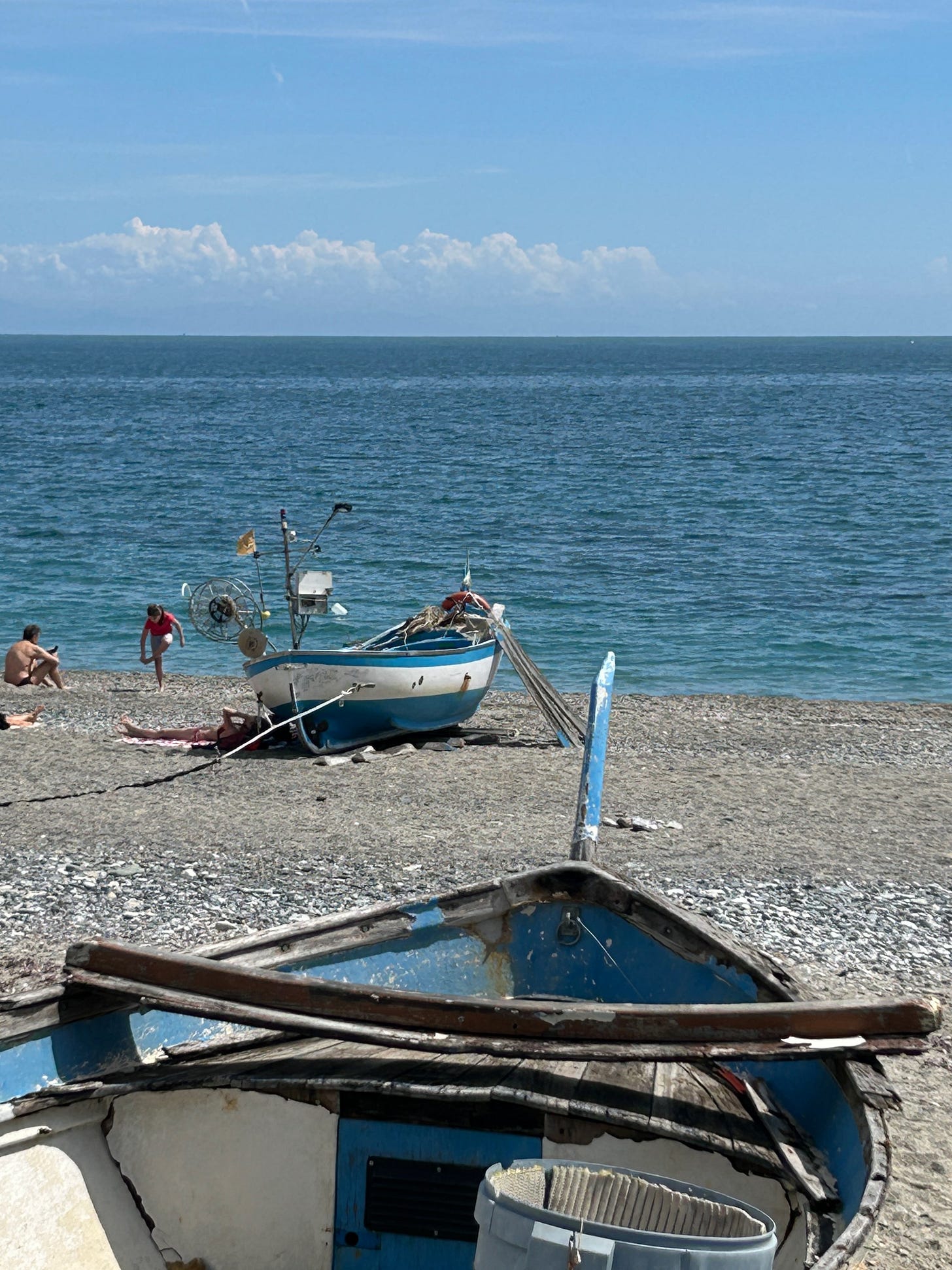
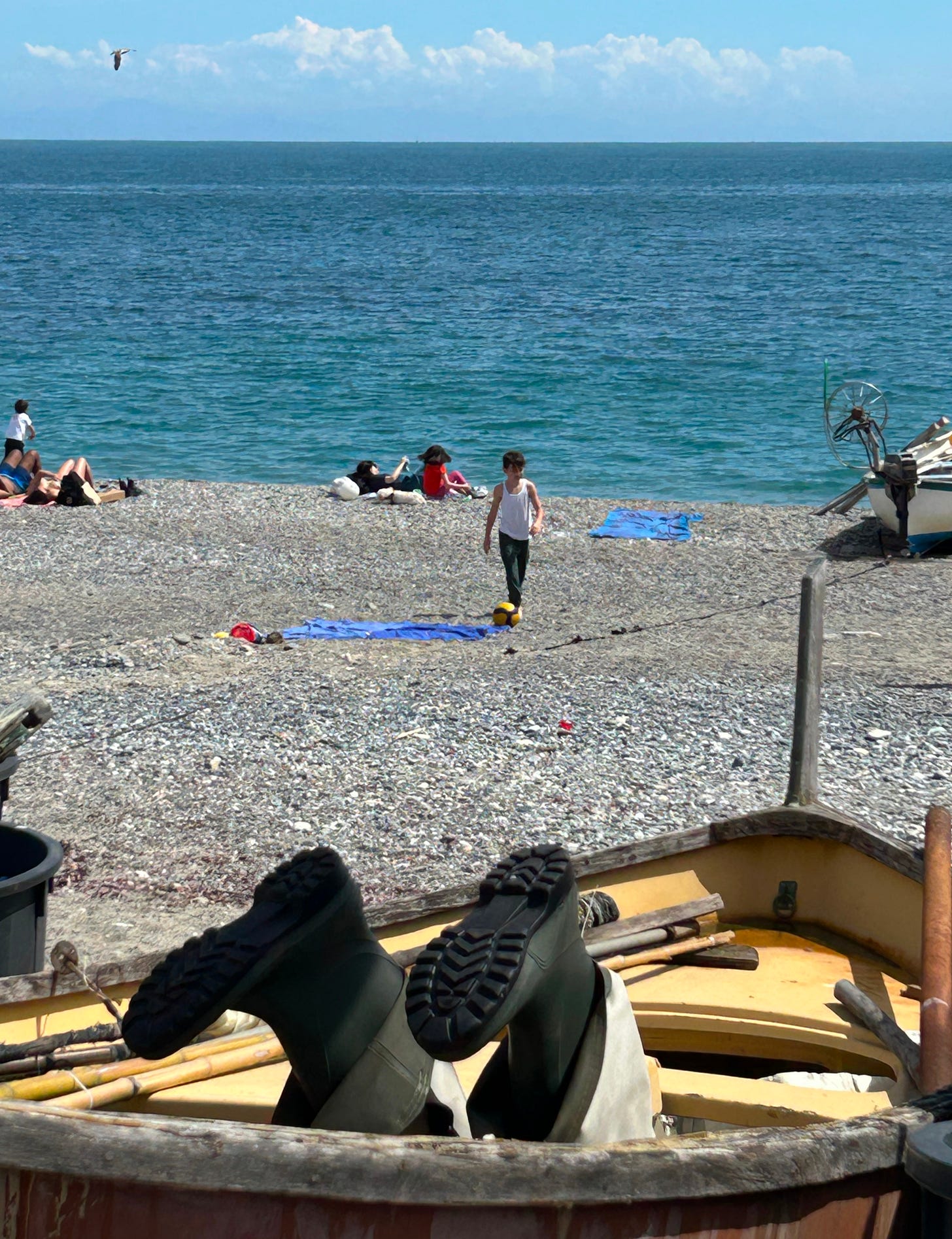
Thank you for taking us along on your day trip to the western riviera. I’ve been to Noli; it is really unique and beautiful. Auguri on your olive oil sommelier achievement, and thanks for introducing us to Domenico. His dedication is admirable!
I wonder if the trees I planted this year will be here 900 years from now now. That would be 30 generations caring for them, loving them even, and predicated on the uncertain viability of the earth we have been privileged to steward.